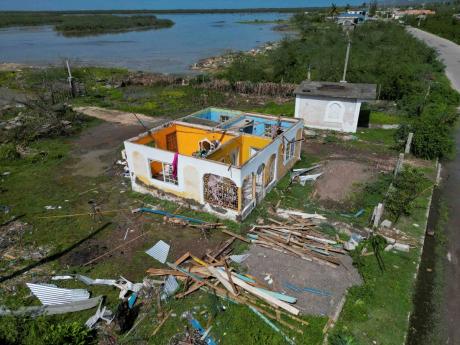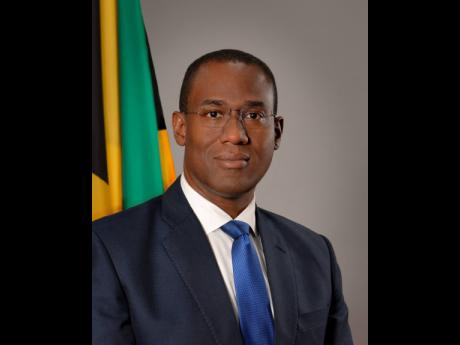Nigel Clarke | Jamaica’s disaster risk financing framework – the CCRIF layer
In September 2004, Hurricane Ivan demolished Grenada, submerged Cayman, and battered Haiti and Jamaica. In the immediate aftermath of the passage of this devastating hurricane, CARICOM heads of government met in an emergency session and, according to Grenada’s then Prime Minister Keith Mitchell, “issued a clarion call to international financial institutions to develop affordable and effective catastrophe risk instruments”.
The international community responded by providing the technical and financial resources that led to the establishment of the Caribbean Catastrophe Risk Insurance Facility known as the CCRIF.
As CCRIF shares on its website: “the CCRIF was developed under the technical leadership of the World Bank and with a grant from the Government of Japan. It was capitalised through contributions to a Multi-Donor Trust Fund (MDTF) by the Government of Canada, the European Union, the World Bank, the governments of the UK and France, the Caribbean Development Bank and the governments of Ireland and Bermuda, as well as through membership fees paid by participating governments.”
These donors contributed US$47 million for the initial capitalisation that allowed the CCRIF to open its doors to Caribbean governments in 2007. As a legal entity, CCRIF is domiciled in Cayman, has no physical offices, and operates virtually with its CEO based in St Lucia.
Over the 10 hurricane seasons between 2007 and 2016, Jamaica was impacted by five natural disasters – Hurricane Dean (2007), Tropical Storm Nicole (2008), Tropical Storm Gustav (2008), Hurricane Sandy (2012) and Hurricane Matthew (2016). Despite the impact of these five natural disasters, Jamaica received no payout from the then-CCRIF policies.
By 2016, the Ministry of Finance had only J$94 million in the Contingencies Fund and insurance policies with the CCRIF. For practical purposes, this was a single layer of disaster risk financing – i.e. the CCRIF policies – that had the unrealistic burden of covering the full breadth of natural disasters, from low frequency to high frequency, as well as from low intensity to high intensity.
NEGATIVE PRESS
Against this background, the CCRIF sustained cynical and negative press in Jamaica. Even parliamentarians lost faith in its potential. In the last month of the People’s National Party administration in January 2016, then Minister of Local Government Noel Arscott is quoted in The Gleaner as frustratingly expressing “dissatisfaction with CCRIF” and advocating for it to be “renegotiated”.
In 2017, the Public Administration and Appropriations Committee (PAAC), under the chairmanship of then Opposition Member of Parliament Wykeham McNeill, grilled Ministry of Finance officials about a lack of payouts from Jamaica’s CCRIF policies, and called for a “review of the arrangements with CCRIF”. The minutes of that May 17, 2017 PAAC meeting detail that “Mikael Phillips recommended that going forward consideration should be given to self-insurance [as a replacement for CCRIF] to which Messrs. Phillip Paulwell and Fitz Jackson agreed.”
By the time I became minister of finance in early 2018, the sentiments about CCRIF were therefore very negative. As such, the Ministry of Finance faced pressure to terminate or reduce our arrangements with the CCRIF.
In my maiden budget presentation, I advanced the view that “the pursuit of economic independence requires an institutional response to the financial risk of natural disaster”. I committed that the Ministry of Finance would develop a policy for ‘Public Financial Management … for Natural Disaster Risk’, which would be submitted to Parliament for its approval and adoption as the national policy. Further, I outlined that our strategy for disaster risk financing would rely on multiple layers, instead of only a single layer, and these layers would include accumulated fiscal savings, a contingent credit facility, a catastrophe bond, as well as the CCRIF, which is not static but whose policies are renewed and optimised each year.
We accomplished all of these goals, including even additional layers, long before Hurricane Beryl, with the design philosophy that every storm would not trigger all instruments, however, fiscal resources would always be available from some instruments for every storm.
So, we heard the critics. We engaged with the CCRIF. And we chose to do the opposite of what the critics had suggested. We stuck with, and advocated for, the CCRIF, increased coverage limits, and optimised parameters within budgetary constraints.
COMPLETELY DIFFERENT
Today, Jamaica’s policies with the CCRIF have completely different parameters from the CCRIF policies of 2007. For example, Jamaica’s tropical cyclone policy now has a significantly lower Attachment Point, which is defined “as the minimum severity of an event loss which gives rise to a payment and therefore is the loss value at which the policy contract is triggered”, and is analogous to the deductible in a home insurance policy. Today’s policy also has a much lower Exhaustion Point, which is defined as “the severity of the event loss at or above which the maximum payment is triggered”.
In 2020, the first-ever payout from the CCRIF to Jamaica was triggered in the amount of US$3.5 million by Tropical Cyclone Eta, in relation to our excess rainfall policy. The second payout from CCRIF will be made in 2024, in relation to Hurricane Beryl, in the amount of US$16.5 million, as our tropical cyclone policy has triggered. And there may yet be a third payout from CCRIF in 2024, in relation to our excess rainfall policy.
The CCRIF provides model-based parametric insurance. This allows for faster payouts than indemnity insurance, which requires loss adjusters to go into the field and verify the value of actual losses, which can take several months.
CCRIF policies are not triggered by actual observed losses. Instead, payouts are made against modelled losses. CCRIF maintains huge amounts of data about the distribution, location and value of assets in insured member states. Once a tropical cyclone passes and its descriptive quantitative parameters are known, CCRIF simulates the passage of the hurricane on its computers, incorporating the database of asset distribution, and calculates the value of the damage sustained in the modelled event. For the policy to trigger, these “model losses” have to exceed the Attachment Point in the policy.
Sometimes, as in the past, modelled losses have not exceeded the Attachment Point agreed to in Jamaica’s CCRIF policy, and, as such, there has been no payout. It is also possible for there to be deviations between modelled losses and actual losses, as no model provides a perfect description of reality, even though the CCRIF updates its models periodically to ensure that this basis risk is minimised.
Based on the totality of the 2007-2024 experience, the reader should see that it would be suboptimal to rely on the CCRIF as the only real disaster risk financing instrument, as Jamaica did for the first 11 years of this period. The CCRIF may not be triggered by many natural disaster events that cause damage to Jamaica. Furthermore, the maximum payout under tropical cyclone is US$84 million, which would be insufficient for the relief and recovery efforts in the event of a direct hit, where the centre of the hurricane passes over some of the landmass of Jamaica.
In response to these realities, the Government of Jamaica has adopted a proactive approach to pre-financing emerging expenditures that arise from natural disasters, by assembling a multi-layered suite of financial instruments calibrated to provide fiscal resources to finance the relief and recovery. As such, Jamaica has never been better fiscally prepared for a hurricane as it was for Hurricane Beryl.
In a future article, I will address other instruments in Jamaica’s Disaster Risk Financing Framework, including Jamaica’s catastrophe bond.
Dr Nigel Clarke is minister of finance and the public service, and member of parliament for St Andrew North West. Send feedback to opedjamaica@gmail.com or columns@gleanerjm.com


